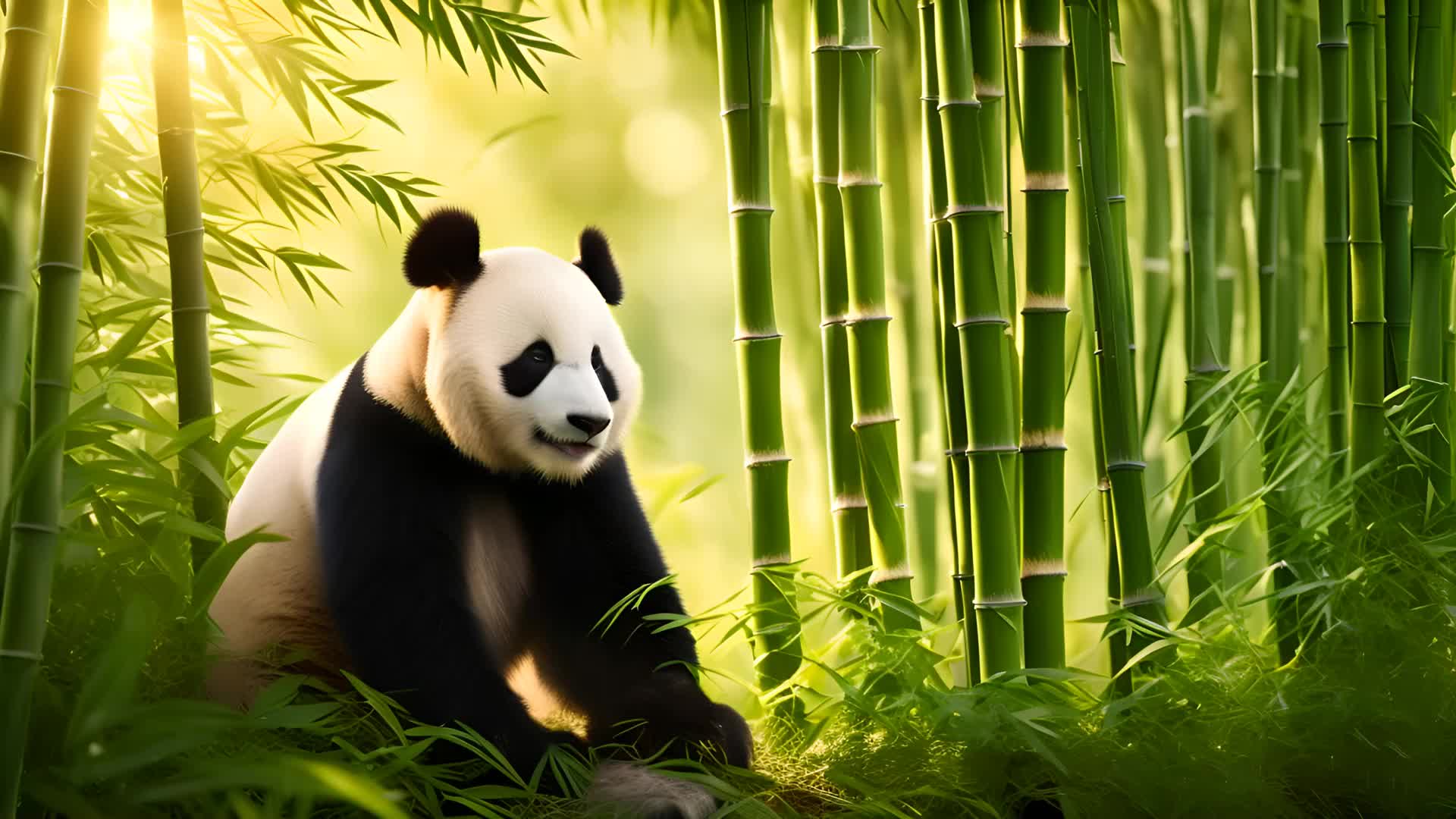Why Do Pandas Love Eating Bamboo?
Why Do Pandas Love Eating Bamboo?
In the vast natural world, giant pandas have become beloved icons for countless people due to their unique black-and-white coloring, round and cuddly bodies, and gentle demeanor. When it comes to pandas, one of the most striking images is their near-constant munching on bamboo. But why are pandas so fond of this seemingly ordinary plant?

1. Historical Origins: The Shift from Carnivore to Herbivore
Millions of years ago, the ancestors of giant pandas were typical carnivores, equipped with sharp claws and teeth for hunting small animals and fish. However, as the Earth's environment changed over time, their diet underwent a dramatic transformation. The arrival of the Ice Age led to a significant decline in prey, while the simultaneous expansion of bamboo forests provided a new food source. Faced with survival pressures, pandas chose adaptation over resistance—they began experimenting with bamboo and gradually developed a unique digestive system to process this high-fiber, low-nutrient food.
2. Nutritional Needs: A Perfect Match with Bamboo
Although bamboo is far less nutritious than meat, it is an almost ideal food choice for pandas. First, bamboo is widely distributed and grows rapidly, providing pandas with a stable and abundant food supply. Second, after millennia of evolution, pandas' digestive systems have become highly efficient at extracting essential nutrients from bamboo, such as cellulose and hemicellulose, which are crucial for maintaining their gut health. Additionally, bamboo has a high water content, helping pandas meet their hydration needs.
3. Unique Feeding Habits and Digestive System
Pandas have a distinctive way of eating bamboo. They use their front paws to hold the bamboo, strip off the outer layer like humans peeling sugarcane, and chew only the tender inner part. This meticulous feeding method not only reduces digestive strain but also allows pandas to fully absorb nutrients from the bamboo. Additionally, pandas have relatively long intestines lined with dense villi, structures that help prolong food retention in the gut, enhance nutrient absorption, and efficiently break down the cellulose in bamboo.
4. An Evolutionary Strategy: Energy Conservation
In a natural environment where food is scarce, pandas' reliance on bamboo as their staple diet also enables efficient energy use. Compared to hunting and digesting meat, eating bamboo—though lower in nutritional density—requires far less energy expenditure. Pandas spend much of their day eating, yet this lifestyle allows them to maintain stable body weight and survival conditions even during food shortages. This "slow living" approach is, in fact, a survival strategy honed through millennia of evolution, aimed at maximizing energy conservation to cope with an unpredictable environment.
5. Cultural Symbolism and Conservation Significance
Pandas' preference for bamboo has not only made them a unique spectacle in nature but also imbued them with profound cultural meaning. In traditional Chinese culture, pandas symbolize peace, friendship, and good fortune. Bamboo, revered as one of the "Four Gentlemen" in Chinese philosophy, represents resilience, integrity, and moral fortitude. The combination of the two has elevated pandas to the international stage, transforming them into ambassadors of friendship connecting nations and cultures.
With growing global emphasis on biodiversity conservation, pandas and their habitats have received unprecedented attention. Protecting pandas means safeguarding the bamboo forest ecosystems they depend on, which plays a vital role in maintaining Earth's ecological balance and promoting sustainable development.

Why do pandas love eating bamboo?
This is not merely a question of biology but a testament to the survival wisdom and cultural symbolism bestowed upon them by nature. By choosing bamboo as their primary food source, pandas have not only adapted to environmental changes but also demonstrated remarkable resilience and adaptability. In this process, we witness not just a marvel of evolution but also a vision of harmonious coexistence between humans and nature. Let us join hands in protecting this gift from the natural world, ensuring that the story of pandas and bamboo continues to be told for generations to come.

comment